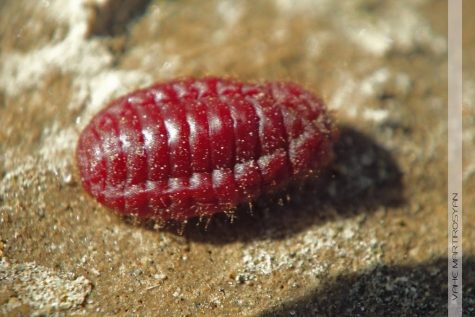Interesting Facts about Food
Often, we eat food without considering what exactly we are eating. However, there is a lot more to that candy or peanut butter you are devouring.

Cochineal, also known by many other names, such as carmine, Natural Red 4, or E120, is a color additive used in many food products. Artificial crab meat, sausage, yogurt, ice cream, gum, and jam are all examples that may use this dye. Derived from an insect bearing the same name, cochineal is extracted by crushing the female cochineal insect and obtaining the chemical pigment from inside its body. There is no harm in ingesting this color additive, nor are there any “bug parts” crushed in the dye.
However, even if there are bug parts, as long as the product pertains to FDA’s Food Defect Levels Handbook, it is allowed. As obtained from the FDA’s official website, some examples of maximum food defects in various foods include the following:
- Cocoa Beans: Average of 10 mg or more mammalian excreta per pound
- Cornmeal: Average of 1 or more whole insects (or equivalent) per 50 grams; an average of 25 or more insect fragments per 25 grams; Average of 1 or more rodent hairs per 25 grams OR Average of 1 or more rodent excreta fragment per 50 grams
- Peanut Butter: Average of 30 or more insect fragments per 100 grams; Average of 1 or more rodent hairs per 100 grams
- Potato Chips: Average of 6% or more pieces by weight contain rot
Another exciting food fact is that the shine given off by certain candies, such as Skittles, gummy bears, jelly beans, and M&Ms, are produced by carnauba wax, the same ingredient used in creating the shiny outer layer of a car. Carnauba wax is obtained from the leaves of Brazilian palm trees and has a high melting point of 180 degrees Fahrenheit. It is proven to be non-toxic, and the high melting point will prevent it from melting inside the human body, making it safe to ingest.
More thought-provoking and less disgusting food facts include capsaicin and VRI receptors. Chili peppers contain a chemical called capsaicin that can accidentally bind to a type of neurological receptor in our mouths to create a “burning” sensation. The function of this receptor, known as the VRI receptor, is to detect heat. So, whenever the capsaicin mistakenly binds to the receptors, an illusionary “hot” sensation can be perceived. Thus, spicy foods with capsaicin are not actually “hot”; the neurons are just firing off wrong signals received at the VRI receptors.
Lastly, bananas are berries. Berries are defined as fruits that develop from a single flower with one ovary and often contain many seeds. Bananas, tomatoes, cucumbers, and kiwis follow these conditions. However, raspberries, strawberries, and blackberries do not, as they developed from a single flower with several ovaries.
Although knowing these facts may not change the way you eat, these facts do provide interesting information to chew on.
Your donation will help support The Lambert Post, Lambert High Schools student-run newspaper! Your contribution will allow us to purchase equipment and cover website hosting costs.







